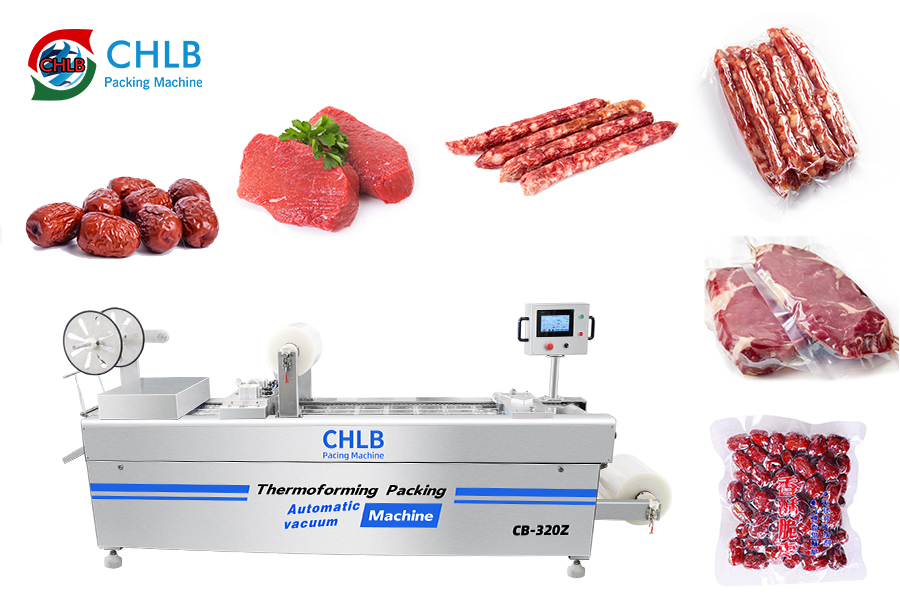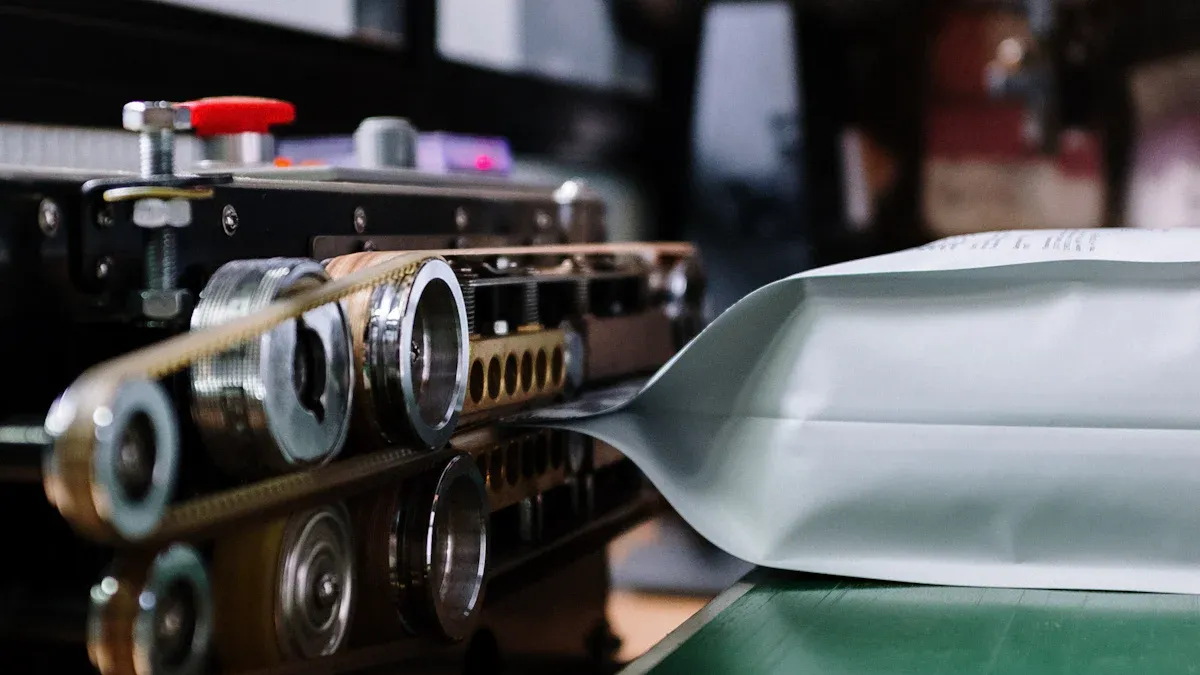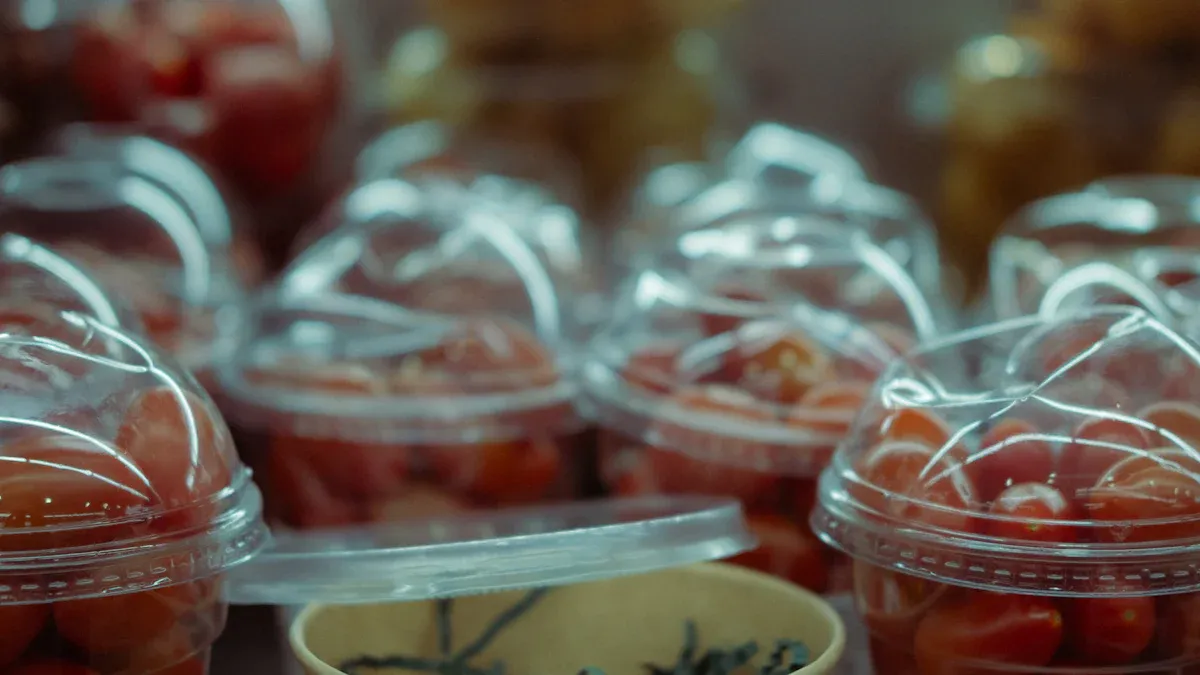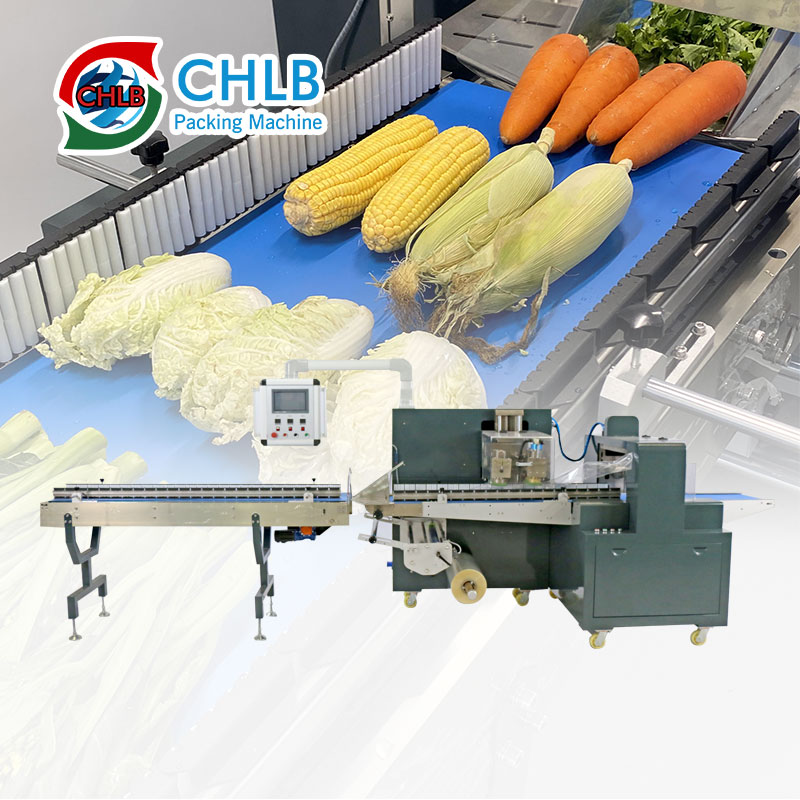Meat packaging isn’t just about wrapping a product; it’s a meticulous process that keeps the meat fresh, sûr, and visually appealing for consumers. Wholesale and retail markets have distinct packaging needs, and striking the right balance between functionality, coût, and aesthetics is key. Let’s learn how is meat packaged through different approaches and materials used to package meat for these markets.
The Importance of Meat Packaging
Good packaging isn’t just a protective layer; it’s the lifeline of meat. For wholesale markets, it ensures large quantities stay fresh during transport. For retail shelves, packaging grabs attention and builds trust. From preventing spoilage to extending shelf life and boosting product appeal, meat packaging is a non-negotiable in today’s food industry.
Types of Meat Packaging Methods
Different types of meat packaging are tailored to meet varying needs, from preserving bulk shipments to creating eye-catching displays for store shelves. Let’s explore the most commonly used techniques in the industry.
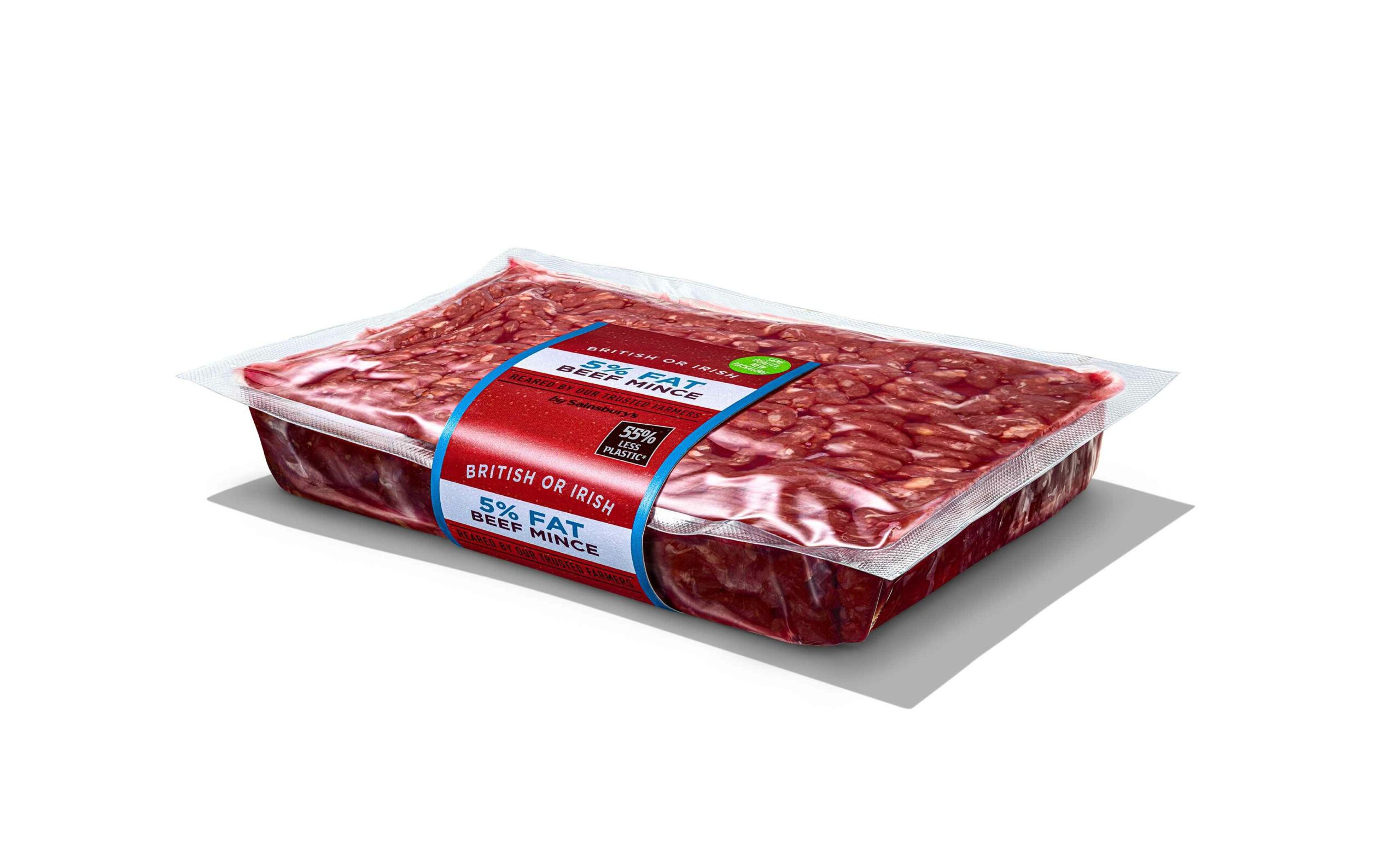
1. Scellage sous vide
Vacuum sealing is one of the most widely used meat packaging types in both wholesale and retail markets. By eliminating air from the package, it minimizes bacterial growth, significantly slows spoilage, and keeps the meat fresh for an extended period. For wholesale suppliers, it’s ideal for handling and transporting large quantities efficiently. Retailers favor vacuum-sealed packaging for its clean, professional appearance that enhances shelf appeal while maintaining product quality and safety.
2. Emballage sous atmosphère modifiée (CARTE)
MAP swaps out regular air for a mix of gases like carbon dioxide and nitrogen. This method is great for keeping meat looking bright and fresh, making it a favorite for pre-packaged retail products. Compared to traditional methods, MAP provides a longer shelf life and enhances visual appeal.
3. Thermoforming Packaging
Machines d'emballage par thermoformage involve the use of heat to mold plastic into a custom shape that securely encases the meat. This process creates a sturdy, tamper-proof seal that ensures freshness and safety. It’s a go-to option in retail markets, where clear visibility of the product is essential for attracting buyers and building trust. The streamlined design not only enhances presentation but also simplifies storage and handling, making it highly practical for both consumers and retailers.
4. Tray and Film Packaging
Tray and film packaging is a common choice for retail cuts such as steaks, chicken breasts, and other portioned meats. In this method, the meat is placed on a durable, moisture-resistant tray and sealed with a transparent film. This packaging style is not only visually appealing but also user-friendly, offering consumers a clear view of the product while ensuring freshness. Its lightweight and convenient design makes it a staple for store shelves and home use.
5. Heat Shrink Packaging
Heat shrink packaging is a popular method in the meat industry for its ability to create a tight, protective seal around the product. This method involves wrapping the meat in a specialized plastic film, which is then exposed to heat, causing the film to shrink and conform closely to the meat’s shape. Le résultat? A durable, tamper-proof barrier that locks in freshness, enhances visual appeal and protects the meat from contaminants during transport and storage.
Packaging Materials Used in Meat Packaging
Meat packaging relies on materials that ensure freshness, sécurité, et commodité. From plastic films to foil and eco-friendly options, each plays a vital role in meeting market needs.
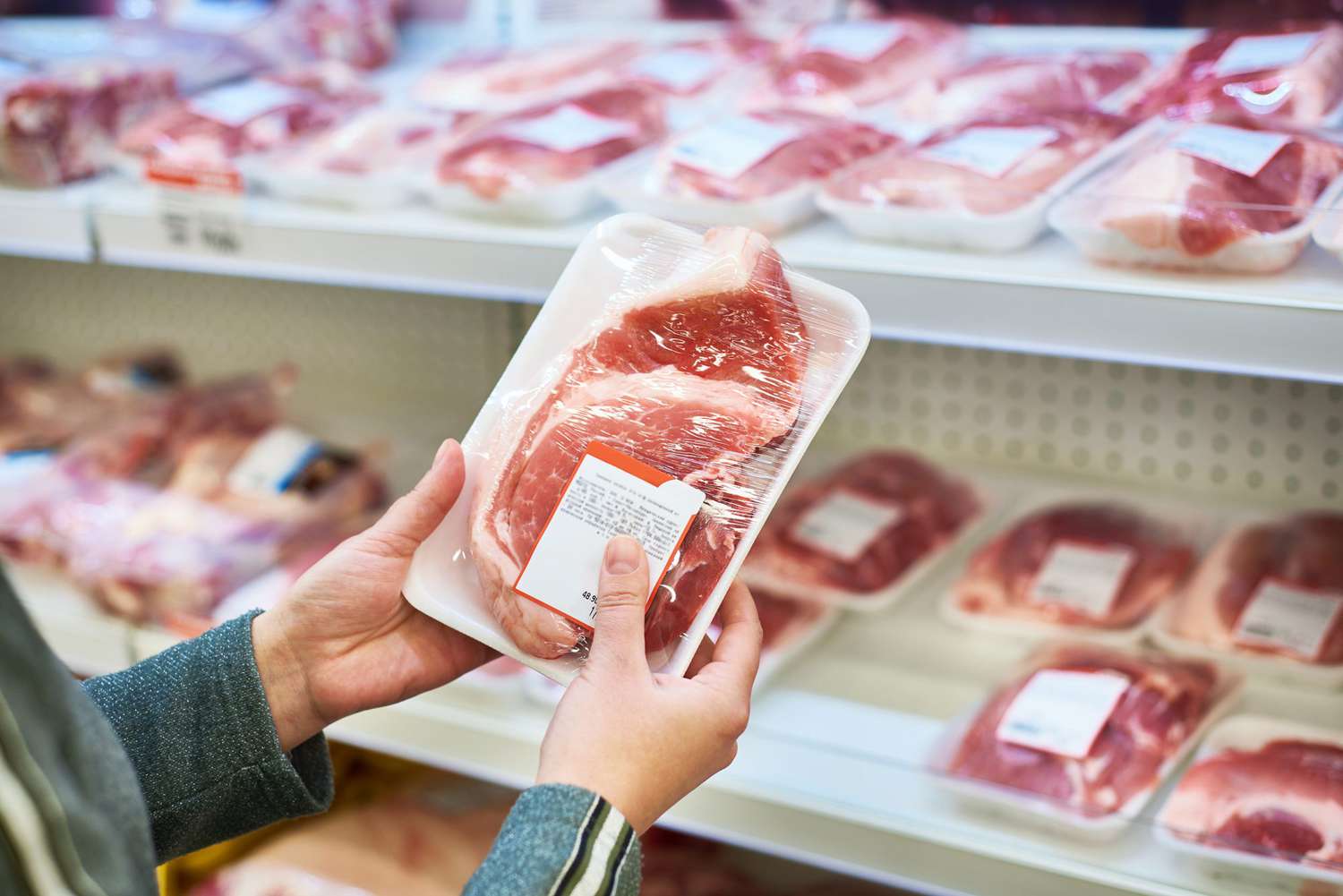
1. Films plastiques
Flexible plastic films are among the most commonly used materials in meat packaging machines, particularly for retail products. These films are lightweight, durable, and provide excellent clarity, allowing consumers to see the product clearly while keeping it protected. Options like shrink wraps and stretch films are widely favored for their versatility and cost-effectiveness, making plastic films a top choice for various meat packaging types.
2. Foil and Laminated Packaging
Foil and laminated materials are often used for long-term meat storage, especially in wholesale markets. These materials offer superior barrier properties, effectively blocking out light, humidité, et de l'air. This level of protection ensures the meat stays fresh and safe over extended periods, making foil-based packaging a reliable solution for bulk and export packaging.
3. Eco-friendly Packaging Options
With growing concerns about environmental impact, eco-friendly materials are reshaping the meat packaging industry. Biodegradable plastics, compostable trays, and recyclable films are gaining traction as businesses strive to meet sustainability goals. These materials not only reduce waste but also align with consumer demands for greener packaging solutions, marking a significant shift toward a more sustainable future.
Meat Packaging for Wholesale Markets
Wholesale meat packaging focuses on efficiency, rentabilité, and durability, ensuring safe transportation and storage for bulk shipments, export, and distribution.
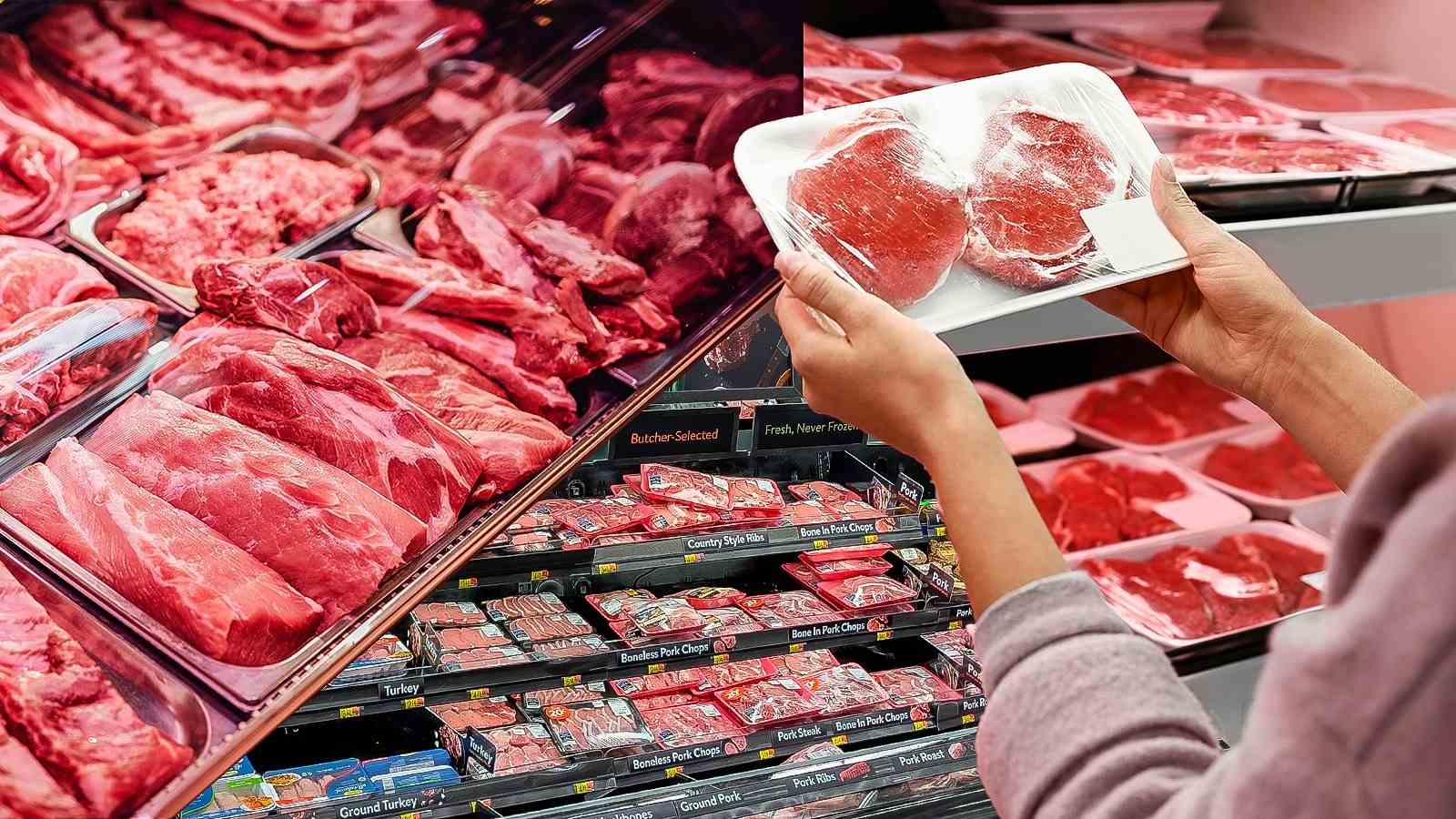
Bulk Packaging
In wholesale markets, bulk packaging is a cost-effective solution that helps minimize expenses. Large vacuum-sealed packs or cartons are commonly used, allowing for easier handling, transport, and storage. This method simplifies logistics while reducing waste, making it ideal for bulk shipments.
Palletizing and Boxed Packaging
When it comes to distribution, meat is often packed into durable boxes and stacked on pallets. This packaging method ensures safe and efficient transportation, particularly for long-distance deliveries. It optimizes space and protects the product during transit, making it a standard practice in wholesale logistics.
Packaging for Export
Meat packaging for export requires extra attention to detail due to stringent international regulations. Packaging must adhere to specific standards while ensuring the meat stays fresh during transport. Durable materials and temperature-resistant options are essential to maintain quality and meet global shipping requirements.
Meat Packaging for Retail Markets
Retail meat packaging prioritizes convenience, freshness, and consumer appeal, balancing packaging types and methods to suit different customer needs and extend product shelf life.
Consumer-Friendly Packaging
In retail markets, packaging is designed with convenience and appeal in mind. Portion sizes are tailored to suit families or individuals, and easy-to-open designs help customers quickly access their products. Clear labeling highlights important details like freshness and nutritional information, making retail packaging essential for standing out on store shelves.
Pre-packaged vs. Fresh Meat Counters
Pre-packaged meat is increasingly popular due to its convenience, hygiène, and consistent quality. Cependant, fresh meat counters still provide a personalized shopping experience, where customers can choose their cuts directly from the butcher. The packaging varies depending on the retailer’s focus, balancing convenience with customer preferences.
Shelf-life Considerations for Retail Packaging
Packaging plays a crucial role in extending the shelf life of meat products. Methods like vacuum sealing, Emballage sous atmosphère modifiée (CARTE), and Cryovac help preserve freshness and ensure longer storage. En plus, clear labels with date markings and traceability information give consumers confidence in the quality and safety of their purchases.
How to Choose the Right Meat Packaging Machines?
Selecting the perfect meat packaging machine for your business is crucial for optimizing operations and maintaining product quality. Whether you’re dealing with wholesale or retail markets, the right equipment ensures efficiency, sécurité, et la rentabilité. Here’s what to consider:
Understand Your Business Needs
Different businesses have unique packaging requirements. Wholesale operations may benefit from high-capacity machines like a commercial ground meat packaging machine, while retail businesses might prioritize equipment that offers precision and attractive presentation for smaller portions.
Evaluate Machine Types
There are various types of meat packaging machines to suit diverse needs:
- Vacuum Sealers: Ideal for prolonging shelf life in retail and wholesale markets.
- Machines d'emballage par thermoformage: Excellent for creating tamper-proof, visually appealing packaging for retail shelves.
- Commercial Ground Meat Packaging Machines: Tailored for businesses handling large quantities of ground meat, these machines ensure efficiency and consistent quality.
Consider Scalability
Choose equipment that can grow with your business. A high-capacity commercial ground meat packaging machine is a smart investment for expanding operations, while modular systems can adapt to changing production demands.
Factor in Material Compatibility
Ensure the machine is compatible with the packaging materials you plan to use, whether it’s plastic films, eco-friendly alternatives, or laminated packaging. This reduces waste and ensures smooth operations.
Focus on Efficiency and Maintenance
Look for machines that streamline production without frequent downtimes. Equipment with user-friendly interfaces, entretien facile, and robust support can save time and reduce costs.
Work with Trusted Manufacturers
Partner with a reputable food packaging machine manufacturer specializing in commercial meat packaging equipment. Reliable manufacturers offer tailored solutions, entraînement, and after-sales support to help you get the most out of your investment.
Challenges in Meat Packaging
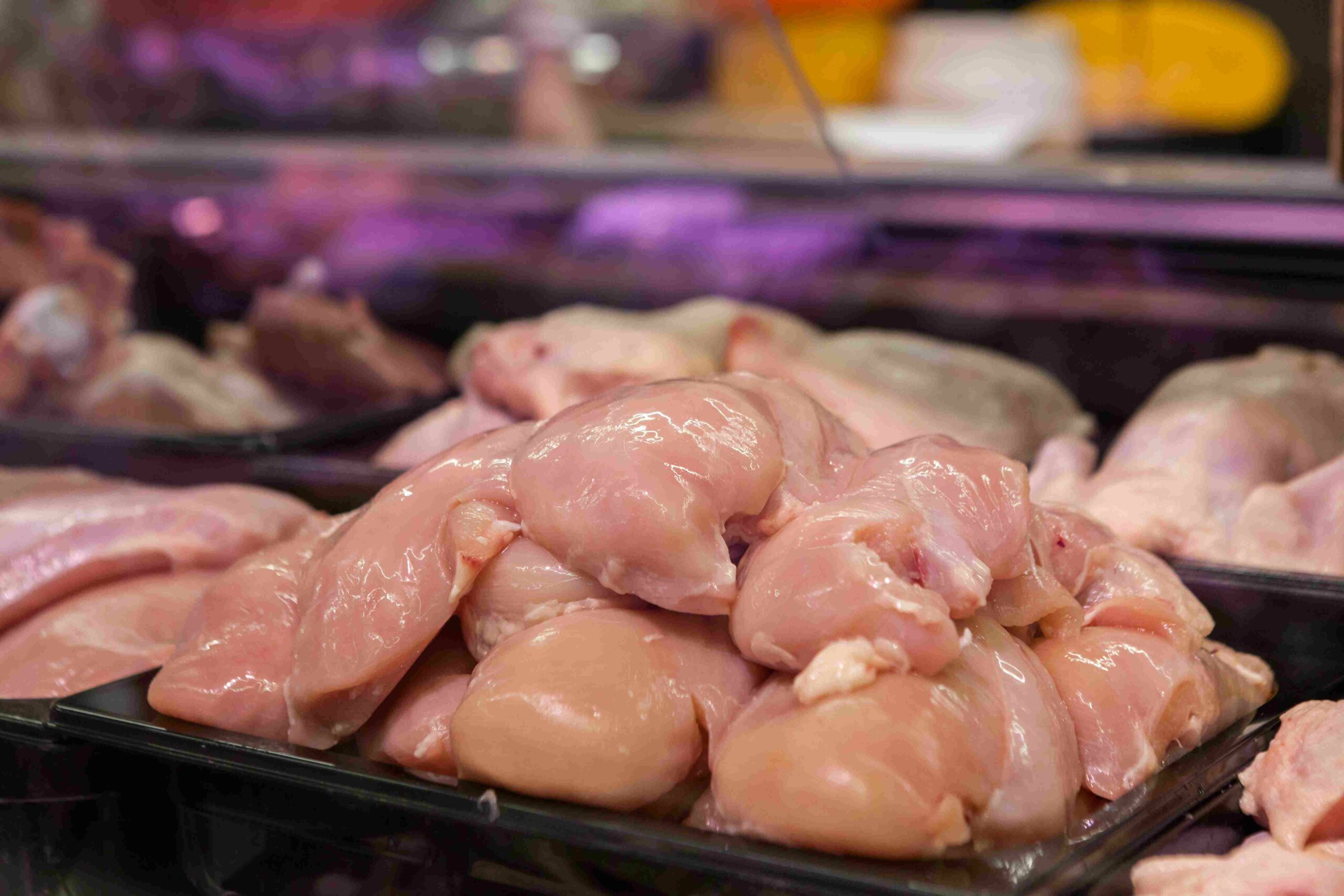
Contamination Prevention
One of the biggest challenges in meat packaging is preventing contamination. Proper sealing, sterile packaging environments, and strict hygiene protocols are essential to ensure safety. While regulations guide the process, it’s the responsibility of manufacturers to maintain these high standards to protect both the product and consumers.
Cost Considerations
Packaging choices have a direct impact on the price of meat. Retailers focus on keeping packaging costs low without compromising quality or convenience for consumers. D'autre part, wholesalers prioritize efficient bulk handling to reduce expenses, often sacrificing some consumer-friendly features in favor of larger, cost-effective packaging.
Conclusion
Packaging meat for wholesale and retail is a blend of science, art, and strategy. From vacuum-sealed cuts to bulk-packed exports, the choices made during the packaging process directly impact freshness, sécurité, et appel. As trends shift toward eco-friendliness and automation, the industry continues to innovate.
FAQ
- What are the best packaging methods for wholesale meat? Vacuum sealing and Cryovac are highly effective for bulk packaging.
- How does vacuum sealing extend the shelf life of meat? By removing air, vacuum sealing slows bacterial growth and preserves freshness.
- What is the difference between MAP and vacuum sealing? MAP replaces air with gases for freshness, while vacuum sealing removes air entirely.
- Why is eco-friendly packaging important in the meat industry? It reduces environmental impact and appeals to sustainability-conscious consumers.
- How does packaging affect the cost of meat for consumers? Advanced packaging options may increase costs slightly, but they ensure better quality and longer shelf life.

